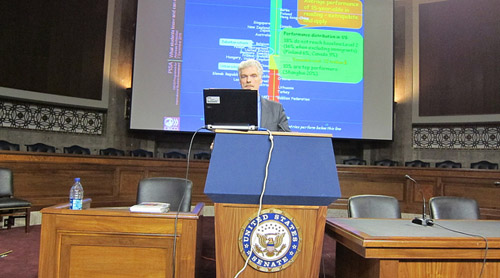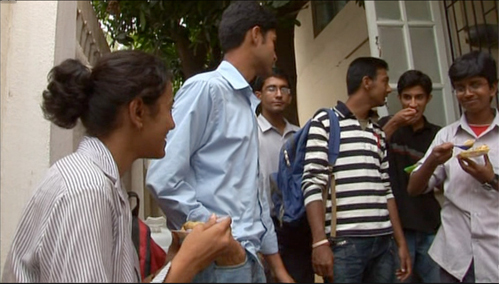對教育的投資就是對人民和國家未來的投資. 這也與金錢有關!
“費用個人和年輕人離開學校沒有資質的社會在不斷上升,” OECD指出秘書長古里亞天使與經合組織的年度連接 教育一瞥 報告.
根據這份報告, the global economic crisis has proved much tougher for people without university degrees. Unemployment rates in 2009 大學畢業生站在 4.4% 與 11.5% for those people who did not complete high school. Current graduation trends indicate that 82% 今天的年輕人將完成高中教育, but those who don’t will face greater challenges entering and staying in the job market. 以上 50% 的 15- 到19歲的孩子誰不上學失業或出勞動力.
Governments therefore need to invest in education. Better educated people are less likely to need unemployment benefits or welfare assistance, 和交更多的稅,當他們進入就業市場. 一個人有大專學歷需要支付的平均 $91,000 在所得稅和在他的職業生涯社會貢獻, 超出了政府支付他的程度. 教育支付個人, 太: the gross earnings premium for an individual with a tertiary degree exceeds $300,000 男人和 $200,000 為整個OECD國家,婦女, 在他們的工作生活.
該 教育一瞥 報告, 其中首次包括在巴西教育系統的分析, 中國, 印度, 印尼, 俄羅斯和南非, shows the global picture is changing. 目前, 三分之一的受過大學教育的退休人員居住在美國, 但只有五分之一的大學畢業生進入勞動力市場不. 反過來, 而只有 5% 成年人在中國擁有大專學歷, 因為它的人口規模, 現在全國排名第二,落後於中美. and ahead of Japan in the number of people with tertiary attainment among OECD and G20 countries. 中國 (包括香港) 也有利於 19.5% 來自非OECD國家的所有國際學生.
OECD部負責人安德烈亞斯·施萊歇爾指出: “越野相關性高 (+0.51) 學生的比例進行以下水平實證 3 in PISA and expected years not in education and unemployed or out of the labor force. If we look at the percentage of 15-29 年- 孩子不能在教育和失業或出勞動力, 與PISA閱讀成績的相關性 -0.37, 並為學生的比例低於執行能力水平 3 在PISA, 的相關性是0.35。”
該報告的其他調查結果顯示,OECD國家花 6.1% 他們對教育的GDP 2008. 之間 2000 和 2008, 教育支出增加的速度超過國內生產總值 25 的 32 國家的數據可用. 之間 2000 和 2009, 教師’ 工資實際增長在大多數國家,. 增幅最大, 遠遠超過 50%, 主要出現在捷克共和國, Estonia and Turkey. Women make up the majority of students and graduates in almost all OECD countries, 而在教育領域主要是獨領風騷, 健康和福利, 人文藝術. 年輕女性比男性更容易,除了德國和瑞士在每一個經濟合作組織成員國完成高中教育. 男性佔主導地位的工程, 製造業和建築業.
For more information: 教育一瞥 2011: OECD指標 和
全球搜索教育
按照ç. M. 魯賓在Twitter: www.twitter.com/@cmrubinworld





最新評論